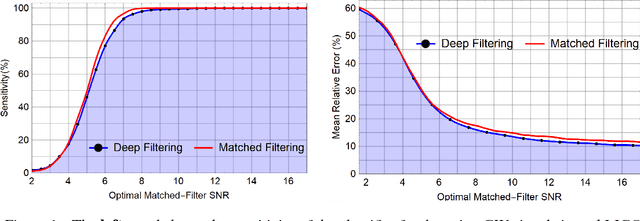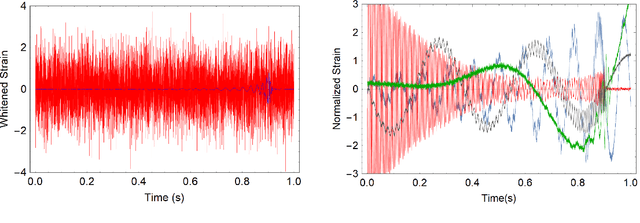Deep Learning for Real-time Gravitational Wave Detection and Parameter Estimation with LIGO Data
Paper and Code
Dec 11, 2017

The recent Nobel-prize-winning detections of gravitational waves from merging black holes and the subsequent detection of the collision of two neutron stars in coincidence with electromagnetic observations have inaugurated a new era of multimessenger astrophysics. To enhance the scope of this emergent science, we proposed the use of deep convolutional neural networks for the detection and characterization of gravitational wave signals in real-time. This method, Deep Filtering, was initially demonstrated using simulated LIGO noise. In this article, we present the extension of Deep Filtering using real data from the first observing run of LIGO, for both detection and parameter estimation of gravitational waves from binary black hole mergers with continuous data streams from multiple LIGO detectors. We show for the first time that machine learning can detect and estimate the true parameters of a real GW event observed by LIGO. Our comparisons show that Deep Filtering is far more computationally efficient than matched-filtering, while retaining similar sensitivity and lower errors, allowing real-time processing of weak time-series signals in non-stationary non-Gaussian noise, with minimal resources, and also enables the detection of new classes of gravitational wave sources that may go unnoticed with existing detection algorithms. This approach is uniquely suited to enable coincident detection campaigns of gravitational waves and their multimessenger counterparts in real-time.
 Add to Chrome
Add to Chrome Add to Firefox
Add to Firefox Add to Edge
Add to Edge